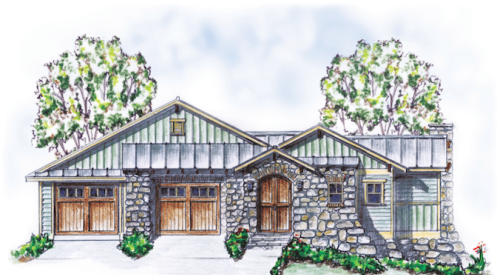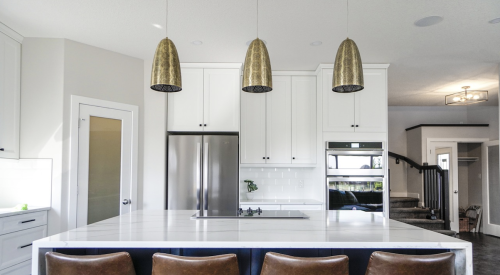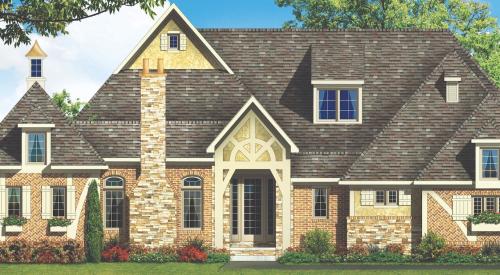|
A little girl will like the high, built-in princess bed and the loft above for her stuffed animals. When she's older, the loft is for gabbing on the phone. The window seat, shelves and drawers under the platform bed work at any age.
|
Whether you're a builder on a custom home project, a remodeler overhauling an existing home or a homeowner just looking for great ideas, Wendy Jordan, author of The Kidspace Idea Book, has them. Here are some do's and don'ts from Jordan about creating rooms for everyone from toddlers to teenagers.
Don't
- Overdue it. Themes are great, but too much stuff becomes cutesy or corny and might stifle a child's imagination and joy in making the space his own.
- Cast it in stone. If you build a room that's for a kid who's only 4 feet tall, you'll have to redo it when she grows. If you're going to build in something, make sure it's adaptable.
- Isolate kids. In huge houses, kids sometimes have suites and playrooms in their own wing. Keep in mind that littler kids want to be in earshot and eyeshot (and within running distance during thunderstorms) of their parents.
- Be boring. One huge rectangle seems pretty blah if you have the opportunity to bump out space or build in nooks and crannies.
- Make it unsafe. Lofts, ladders and things to climb on are fun and interactive, but keep in mind the child's age and dexterity.
- Create cookie-cutter rooms. Kids want something different and, if possible, something they had influence designing..
Do
|
Odd ceiling angles and the window bay make for great kid spaces. Wraparound seating suits otherwise hard-to-furnish walls and shelves with triangular cubbies that are original and fun.
|
- Make the space structurally interesting. Quirky corners, window bays and things to climb appeal to kids. They also like to nest, to make private spaces and imaginary worlds. Give them an opportunity with partitions or areas with slightly lower ceilings that suggest coziness.
- Remember that small is OK, at least for little ones, who tend to feel more comfortable in manageable spaces. Even for older kids, floor space in small rooms can be freed up with lofts, platform beds with storage below or even by turning a walk-in closet into a sleeping room and putting an armoire in the "living room" that was the bedroom.
This room has places to climb, a loft to play in, a reading nook on a platform and fanciful design. The child sleeps around the corner, not distracted by the fun. - Give the room zones. For little kids especially, defining areas help them think "this is where I sleep, this is my reading corner, this is where my toys are." Rugs, shelving and movable cubes are visual indicators of different areas.
- Create public and private zones. When kids get older, they use their room for hanging out with friends, and they might like having that space slightly separated from their bed and personal stuff.
- Use paint. One of the cheapest and most effective decorating tools, paint can easily change with the child. Keep it tasteful and simple.
- Make rooms equipped for technology. Phone jacks and computer hookups might as well be put in from the start, even if the kid isn't old enough to use them. Make sure there are enough outlets for all their electronics.
A cove framed by pass-through shelves and a lookout platform above is for sleeping, but a pre-teen and his friends can hang out in the computer area by the window or in the center of the room because the built-in bed and storage closet free up prime space. - Create storage that's reachable and adjustable. Closet bars, hooks, shelves, cubes and drawers within a 6-year-old's reach help her pick up after herself, giving her a sense of independence. As she grows up, closet bars and hooks can be moved. If she has built-in shelves, she can use the higher ones as she reaches them.
The Kidspace Idea Book is published by The Taunton Press.
For ideas on designing boys' rooms, click here.
For ideas on designing girls' rooms, click here.
PB Topical Ref











